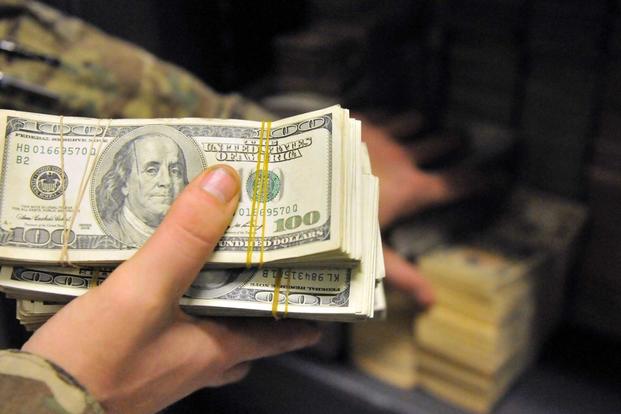The 3.1% pay raise promised for the military could be at risk in the ongoing impasse over the defense budget and the political turmoil surrounding the impeachment inquiry, a top House Republican said Wednesday.
Rep. Mac Thornberry, R-Texas, the ranking Republican on the House Armed Services Committee, said various military specialty pays also must be approved in the now-stalled National Defense Authorization Act legislation and by several appropriations committees.
The pay raise and other vital defense programs will remain at fiscal 2019 funding levels unless Congress can pass a fiscal 2020 NDAA by a Nov. 21 deadline, Thornberry said.
"We have to pass it. Nothing is safe until we pass it," he said of a range of initiatives, including the pay raise.
Related: Trump Signs Defense Spending Bill with Largest Troop Pay Raise in 10 Years
The budget impasse blocks "any of these things from moving forward," he added, saying that the issue with the pay raise rests with passage of an appropriations bill -- not the NDAA.
The White House last March proposed a 3.1% pay increase for the military in fiscal 2020, which began Oct. 1, and both the House and Senate included 3.1% pay increases in their differing versions of spending levels for defense in fiscal 2020.
Congress was unable to reach agreement on the NDAA by the Oct. 1 deadline on a range of issues, including border wall funding and spending on the nuclear triad. A continuing resolution was passed to keep the government funded at 2019 levels through Nov. 21.
If approved, the 3.1 percent pay raise would be the largest for troops in a decade. For junior enlisted troops, it would translate into about $815 more in pay annually; senior enlisted and junior officers would get about $1,500 more, according to government estimates.
Here are the basic military pay raises going back to 2007, according to the Defense Department:
- January 2007: 2.2%
- April 2007: 0.5%
- January 2008: 3.5%
- January 2009: 3.9%
- January 2010: 3.4%
- January 2011: 1.4%
- January 2012: 1.6%
- January 2013: 1.7%
- January 2014: 1.0%
- January 2015: 1.0%
- January 2016: 1.3%
- January 2017: 2.1%
- January 2018: 2.4%
- January 2019: 2.6%
-- Richard Sisk can be reached at Richard.Sisk@Military.com.
Read more: Air Force Begins Investing Billions in Adversary Air Training












